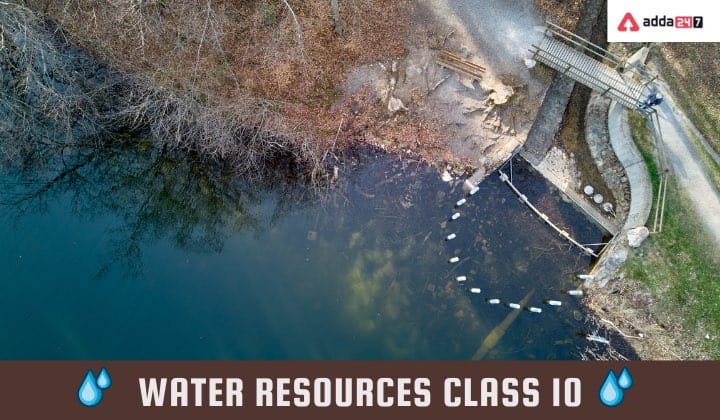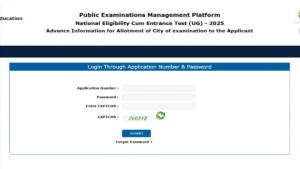Table of Contents
Water Resources
Water Resources are a valuable asset to Earth. Three fourth of the earth is covered with water, but only 2.5 percent out of the total water volume exists as freshwater. The rest 96.5 percent is salt water from the ocean. More than 70 percent of the freshwater source exists as glaciers in Antarctica and high-altitude mountain regions of the world. In the world, there is only 30 per cent fresh water which is stored as groundwater. Water resources are renewable, and it gets renewed within a short period. The hydrological cycle makes Water Resources a renewable source.
Water Resources- Fresh Water Sources Class 10
The freshwater sources include surface water and groundwater. The surface water sources are rivers, lakes, ponds etcetera. The water that is stored underground is also a freshwater source. Both these sources get renewed by rainfall.
Water Resources- Water Scarcity And The Reasons Behind It
Water Scarcity is nothing but a shortage of water. It can happen naturally in the regions which are prone to drought and experience low rainfall.
Several other reasons may lead to water scarcity. These reasons include:
- Water Scarcity can happen by overexploitation of the water resources. The excessive or unnecessary use of water in various parts of the world is one of the main reasons.
- In dry areas, more water is required for irrigation purposes. Water is also required more and more because of multiple cropping and for HYV seeds. More food resources are needed as the urbanization and industrialisation are progressing along with the civilisation.
- Water is not distributed equally on this planet. In some parts, there is sufficient water available to fulfill all the needs, but in some parts, people suffer from water scarcity.
- The water quality is deteriorating day by day. It happens because domestic wastes and industrial wastes get into the water sources. Water pollution can also occur as chemical pesticides, and fertilizers get washed away by rainfall and fall directly into the water bodies.
- Human activities like the immersion of idols and many religious rituals also lead to water pollution, and the water sources become useless. Pumping out the groundwater leads to the falling level of water underground.
- Water scarcity also affects the ecological cycle. It is high time to conserve and manage all the water resources.
Water Resources- Measures Taken For Water Conservation
- Stoppage of overusing of underground water and it can be recharged by using techniques like rainwater harvesting, watershed development programs etcetera.
- By avoiding the wastage of water.
- Water conservation can also be done by using irrigation techniques like drip irrigation, sprinkles etcetera.
Ace your class 10th board exams with Adda247 live classes for class 10th preparation.
Water Resources- MultiPurpose River Projects and Integrated Water Resources Management
From ancient times the water is conserved by constructing structures like dams which were used by building stones over water sources. Even now in India, there is a presence of dams in most of the rivers.
Water Resources- Definition Of Dam
A dam is a barrier that is being built across flowing water that obstructs, directs or retards the water flow and by doing so creates a water reservoir, lake or impoundment. The term ‘dam’ refers to the water reservoir, not the whole structure. You can also take a look at the major dams in India map class 10 to have a better understanding.
Most of the dams are built to control floods, but some of them triggered floods. One of the significant movements to save a river is ‘Narmada Bachao Andolan’. It was a movement which was mobilized by an NGO and had protesters that included tribal people, farmers, human rights activists and environmentalists. The protest was against a dam called Sardar Sarovar Dam being built across the Narmada River in Gujarat. The movement focuses on rehabilitation and environmental issues.
Water Resources Class 10 Notes, Geography Chapter 3 Question, and Answers
Ques 1. What role does water play in geography class 10?
Ans. We utilize water for a variety of purposes, including washing clothing, mopping floors, watering gardens, etc. Water is also necessary for the operation of industries. Water is obviously highly important, so we must conserve it.
Ques 2. Why is water called a resource?
Ans. Water resources are sources of water that humans can use or might use.
Ques 3. Is water a common resource?
Ans. Any limited resource, like water or pasture, that offers consumers measurable advantages but that nobody in particular owns or has exclusive claim to, is referred to as a common resource (or the “commons”).
Ques 4. Is there an endless supply of water?
Ans. Water is a finite resource.
Ques 5. What poses the biggest risk to water resources?
Ans. One of the biggest dangers to water supplies is ecosystem degradation, which frequently results from changes to the environment including clearing forests, turning natural landscapes into farms, expanding towns, constructing roads, and surface mining.
Ques 6. A public or private resource, is water?
Ans. Water is not a private good; it is a common resource. For the benefit of everyone and the environment, public policy must guarantee the sustainability of clean water supplies.
Ques 7. How does agriculture contribute to the strain on water supplies 10?
Ans. To boost productivity, most farmers have their own wells and tube wells on their farms for irrigation. This resulted in lower groundwater levels, which negatively impacted people’s access to water and their ability to eat.
Ques 8. What is India’s main source of freshwater?
Ans. In India, the main sources of freshwater are surface and ground waters.



 NEET City Intimation Slip 2025 Available...
NEET City Intimation Slip 2025 Available...
 PSEB 12th Result 2025 @pseb.ac.in, Punja...
PSEB 12th Result 2025 @pseb.ac.in, Punja...
 CUET UG Date Sheet 2025 @cuet.nta.nic.in...
CUET UG Date Sheet 2025 @cuet.nta.nic.in...

